Chocolate Shakes
MASTATAL, September 1-8: COSTA RICA
Leah: While I shared many of Steve's frustrations, especially with regards to what I perceived as gender inequities from time to time and wondering how this finca would self-sustain without volunteer labor and incomes, I still enjoyed our time here a great deal. I learned so much in a short time about organic farming and rural living and I hope to augment that knowledge moving forward. I loved the little things, like seeing my first poison-dart frog in the wild, showering with only 3 walls, swaying to sleep in our treehouse, forming the fresh chocolates into molds, watching the fireflies come to life at dusk and sucking on the cacao seeds as we removed them from the pods. Much of this experience reminded me of the Peace Corps--never being fully clean, odd sounds at night, unknown flora and fauna and knowing that you're always a step behind the locals. However, this weren't negatives for me and it was nice to step off the travel wagon for a while and just be. I often caught myself lazing in the hammock staring at the rain and fog over the valley and thinking about our trip--how we are going to sustain it, what we'll see, who we'll meet and even what our inevitable re-entry to the states will look like. It's all part of the unknown and embracing the present, which has always been difficult for me, but in Mastatal I reveled in the here and now and not worrying about anything other than if there would be enough fresh cas juice for seconds at mealtimes. This was definitely an experience; even though I'm still trying to remove cacao from under my nails and absolutely appreciate no longer having red clay plastered to my clothes and skin at all times, I'm glad we experienced La Iguana Chocolate, poo holes, pods, earthquakes and all.
Steve: Our travel
day from Quepos to Mastatal for our week on the La Iguana cacao farm started
off leisurely enough but as we’ve learned things can go awry very quickly.
After a morning of lounging in the pool and grabbing a last bite of pizza, we
boarded the 1 PM bus that would take us close to our rural destination where we
could catch a transfer. This was the only bus for the day (except for a 5 AM
bus that just didn’t make sense) so we were 1 for 1 on buses at this point;
according to the bus driver, we should arrive with an hour to spare before
encountering the 4:30 bus to Mastatal from the “town” of Santa Rosa (per
directions supplied by the finca). This
is where Murphy’s Law always comes into play: first we came upon a good 30
minute delay just trying to leave Quepos due to some major roadwork. We then continued on and figured that we were still in good shape, even with the
winding dirt roads and the early afternoon rain that would surely slow down our
progress. Next, in conferring with the bus driver and a local, we were dropped
off at the apparent location indicated on our directions. We were expecting a
town but instead were at the entrance to a national park that had a sign from which any logical person would infer that the same road led to this town. With the clock
ticking we hoofed the 1 Km only to come upon the park ranger’s
outpost—apparently there was no town and to get to Mastatal we had to be right
where we were dropped off to catch the bus, or there would be an hour and a
half hike in our near future. At this point we had 10 minutes to hike back to
the road, with our packs of course, only this time it was uphill. Needless to
say we sucked it up and made impressive time getting back to the road—the short
story is that we caught our bus and made it to Mastatal, a tiny town of 150 people, with our attitudes, and
marriage, intact (although I have some choice photos of Leah’s demeanor as we
waited for the bus).
Arriving to La Iguana Chocolate farm we had no idea what to expect. Was the work going to be back-breaking?
Were the people friendly? Could we really eat all the chocolate we want? I can
tell you what I didn’t expect was the volunteer coordinator who welcomed us
upon our arrival. Van Tran is a petite, young Vietnamese-American woman from Florida
with a warm and rambunctious personality that was twice her size. She took us
for a quick tour of the volunteer area before showing us to our room in the
tree house. First I should mention the bathroom and shower which had modern
plumbing and hot water--each had a large opening that looked out onto
the scenic forest that was their backyard; don’t worry, there was nobody for
miles so you only had to worry about birds and geckos watching you while you
bathed. Next was our bedroom in the “tree house” which was really a
free-standing structure, but with the sprawling tree that stood right outside
our room the name was not much of a misnomer. Our room was something taken out of Swiss
Family Robinson, replete with a hand-carved bed, thatched roof and the
ubiquitous mosquito net. The most striking feature is that there were only
three walls—my side of the room only had a wooden railing so as to offer views
of trees, sprawling hillsides and horses grazing below. This would clearly not
be for everyone—bugs and spiders had a virtual welcome mat into our room—but I
have to admit that we slept well pretty much every night of our stay. Waking up
at 5ish every morning to the gentle sun and spry birds was a routine that I quickly
became used to. (Leah: or at 3 a.m. to the flippin' roosters and again at 4 a.m. to a blaring radio up the hillside, but who's keeping track?)
After making our bed and situating our packs we embarked on
the task of getting to know everyone else on the finca. We met our flatmates in
the tree house—fellow Californians Brett and Alana—who had already spent a week
at the farm and proved to be entertaining and fun company for the duration of
our stay. We then all headed down for dinner (which was typically around 6ish
every evening) where we would meet the Garcia Salazar family: there was the
father, Juan Luis; the matriarch Lidette; the at-times-unintelligible but
ever-friendly uncle Ronaldo; and their three boys (there’s a daughter too, but
she’d apparently just moved away). We
didn’t have much interaction with two of the sons however the eldest, Jorge,
was for all intents and purposes in charge of the farm—from volunteers to
making and selling chocolate to planting and development of all other animals
and crops. At 24 Jorge was in many ways beyond his years, the only family
member to speak English and having a huge working knowledge of all aspects of
organic farming, specifically with the limited resources available on their
land. I would soon find that Jorge still has much to learn, particularly in
interpersonal communication, but I will get to that later.
The routine on the farm was generally as follows: breakfast
by 6:30ish, work from 7 to 12, then lunch, and until dinner at 6 the rest of
the day was open for hiking and exploring, or more typically hammocks and
reading. There was a white board where daily meal tasks were assigned, i.e.
somebody was assigned to either assisting in cooking or to clean for each of
the three meals. Depending on the meal, “cooking” really consisted of picking and
dicing greens for the salad (all veggies were fresh and grown on the farm—this
was deliciously organic and we could eat the citrusy hibiscus leaves every meal
if we could), making fruit juice, and in the case of breakfast frying plantains
and scrambling eggs. Lidia would take care of the rice and beans (which
accompanied every meal) and whatever
main that would be offered. We quickly learned to follow the exact requirements
of every task; the family was very particular on how they liked their meals prepared—the
salad had to be diced into small pieces, eggs had to be seasoned with the right
amount of salt, and I was even shown that I wasn’t cutting oranges correctly even
though they were just being squeezed over the salad. But I digress and as I mentioned will save
my likes and dislikes for the end.
The work week at La Iguana is typically Monday through
Saturday so having arrived late Saturday night, our first full day was an
undeserved day off. After breakfast we spent the first part of the day
hammocking and reading and chatting it up with our fellow volunteers. We found
out that the nearby Rancho Mastatal has a river and waterfall running through
its property which we could access for a “donation.” Never ones to turn down
waterfalls, we joined Brett and Alanna and maybe because it was a lazy Sunday
no one asked for payment to enter their property. As with our trek in Rincon de
la Vieja we were once again rewarded with a crisp, clean waterfall where we
could relax and prepare for the week ahead. Costa Rica has definitely not been
one to disappoint when it comes to unrelenting natural beauty.
Without going into excessive day to day detail on who did
what and where, I’ll break down our tasks into either cacao or other farm work.
First the chocolate: The La Iguana website has a concise explanation here on the steps that occur for cacao grown on a tree to become the chocolate that
melts in your mouth. With the exception of roasting the beans (which Brett did
one day) we were able to participate in almost every part of the process, from
harvesting the seeds (semillas) from
the pods, to fermenting, drying, shelling, grinding and finally hand-forming
the individual chocolates that would later be sold to other fincas in Mastatal
or to the few shops that placed orders throughout Costa Rica (Note: the only task volunteers are not allowed to do is actually cutting the pods off of the tree since cutting in the wrong place can damage the flower and prevent future pods from growing; as it is, only 2% of all flowers actually develop into pods). Every day
generally included laying out the seeds for drying in the sun; of course this
usually included an early afternoon scramble to wrap the tarps back up when the
rains came. For the curious, we made the following flavors of chocolate: mint,
vanilla, orange, coconut, raisin-rum, pinapple-raisin, chile, ginger, coffee,
peanut, pistachio, cinnamon-clove, as well as fine tempered chocolate; Jorge
and Lidia would also occasionally make cookies or brownies. This is where I
once again add that all of these were available all day, every day for constant
sampling and quality control by the hardworking volunteer staff. As I write
this my hands are already shaking from cacao withdrawal.
Work generally seemed to alternate between cacao-related
tasks one day and then farm-related tasks the next. One day we constructed a
vegetable garden just outside the volunteer area, and other days included
weeding, clearing drains, fixing tire steps in the hillside, and the
always-glamorous shoveling shit. We collected tangible English colloquialisms for the compost "poo hole" not
limited to but including chickenshit and my personal favorite, horseshit.
Adhering to the tenants of organic farming and permaculture (pretty much the buzzword when it comes to organic farming), virtually
everything on the farm is reused in some manner—all food scraps either end up
in the compost pile or get fed to the pigs or chickens; there’s a compost
toilet on the other side of the farm; and all of the grey water from the
volunteer shower is used to water the veggie garden. Throw in muddy clay that
covers much of the property and needless to say work was dirty and at times
hard albeit fulfilling.
So that brings me to Wednesday around 9 o’clock. Leah and I
are clearing out some hanging bamboo planters that are used as an herb garden.
We’re focused on our work when I start to hear the eave hanging over us begin
to creak. Often wind or debris falling from trees makes these structures
rattle, so I didn’t immediately think too much about it. And that’s when the
ground beneath our feet began to sway. We looked at each other and instantly
knew that this was an earthquake and not just some big truck entering the
property. The ground motion rapidly picked up intensity and being a native
Southern Californian my years of earthquake preparedness quickly kicked in. I
grabbed Leah and got out from underneath the overhang and away from the
building; in California I would have gotten under a desk or maybe the traditional
door jamb but where we were in Costa Rica there’s clearly no building codes. We
stood and held onto each other for what seemed like a minute (maybe it was),
ready to move if any of the buildings around us decided to topple or if the
hillside gave way. We could hear Lidia screaming “Terremoto! Terremoto!” (in
the same voice that she yells with the rest of the day) which in hindsight was
pretty comical. In time the shaking stopped and everyone met up at the front of
the house. With the exception of a few things falling over in the house and
power being out for a good part of the day, the finca survived unscathed. While Costa Rica was dealing with the
aftermath of a 7.6 earthquake and family back at home was hearing the news, we
continued about our work, isolated from the world just like any other day at La
Iguana. (Leah: This was essentially my first "real" earthquake--despite living in San Diego for 6 years I've only ever felt one tiny one that lasted mere seconds and this was pretty much insane. I kept expecting the earth to split in two or the hillside to give way beneath us and the entire time my brain seemed to be refusing to accept what was happening. It was more an out of body experience than anything else...)
Another potential disaster was averted the following day as we ventured out for a day of harvesting cacao seeds. As we had discovered earlier, the land where the cacao trees grow is not on the same parcel as the house and farm. There was about a 30 minute hike (or horseback ride in Leah's case)(Leah: Jorge pretty much made me and it was so scary going downhill that I would have preferred to walk, thankyouverymuch) that included crossing a river. The way there was rather uneventful, with the exception of Ronal and Jorge having to round up a horse that almost took off. Coming back was a different story. As Leah hopped on one of the horses she motioned for me to film her crossing the river, which being an obedient husband I promptly began taking video. As you can see by my deft cinematography I also included Ronal's little dog Pinto who joined us and swims his way across every time. You'll notice that Pinto is swept downstream and cuts the river at an angle; assuming that our faithful audience would be concerned and curious as to Pinto's fate, I moved over to the right in order to capture his successful landing. No sooner had I begun to pan back to Leah when I heard commotion and barely captured Leah's horse falling, sending her and Jorge down to the ground. Leah was okay with the exception of a few bruises and soreness...although I'm pretty sure she was more sore about me filming the dog instead of her. (Leah: this was scarier than the earthquake by far! My horse tried to clamber out of the river and tripped, fully buckling to the ground beneath me and wasn't able to regain his footing in the soft mud. As he struggled to stand I was struggling to dismount, but the water and muck made it damn near impossible and I was terrified that he would either fall over onto me or accidentally kick me in the head. I somehow heaved myself onto the bank and even though the video makes it seem quick and relatively painless, I was wigged out. But then I had the pleasure of watching my husband ford the river on foot Oregon Trail style because the horses were too skittish to try and go back for him. Fun fun!)
Speaking of dogs, I failed to mention the canine family members at La Iguana. The baby of the family was their daughter's chihuahua Pinky who was given free reign of the house and farm; all other dogs were not allowed into the house or in the dining area. The other dogs included Luna, a smallish black lab that seemed to be the alpha, and two beagle mixes that became our best pals--Pulga and Guardia. As her name implies, Pulga was indeed covered in fleas (as was Guardia) but her friendliness often provided something that was missing from their human counterparts. Only two months into our trip and Leah was convinced that Pulga wanted to come home with us. Not gonna lie, I think she did too. (Leah: I was reading in a hammock one day when Pulga came over and promptly jumped into my lap and curled up into a ball. For the next two hours while it poured rain and I ignored my pressing need to pee, I alternated between reading and flea removal duty, while Pulga never opened an eye and instead nestled deeper into my lap and emitted contented doggie sighs. She really did want to come home with us, she told me so! Besides, any dog who likes to adorably pass out in piles of woodshop shavings and got up to say goodbye to us when we left is all good in my book.)
Another potential disaster was averted the following day as we ventured out for a day of harvesting cacao seeds. As we had discovered earlier, the land where the cacao trees grow is not on the same parcel as the house and farm. There was about a 30 minute hike (or horseback ride in Leah's case)(Leah: Jorge pretty much made me and it was so scary going downhill that I would have preferred to walk, thankyouverymuch) that included crossing a river. The way there was rather uneventful, with the exception of Ronal and Jorge having to round up a horse that almost took off. Coming back was a different story. As Leah hopped on one of the horses she motioned for me to film her crossing the river, which being an obedient husband I promptly began taking video. As you can see by my deft cinematography I also included Ronal's little dog Pinto who joined us and swims his way across every time. You'll notice that Pinto is swept downstream and cuts the river at an angle; assuming that our faithful audience would be concerned and curious as to Pinto's fate, I moved over to the right in order to capture his successful landing. No sooner had I begun to pan back to Leah when I heard commotion and barely captured Leah's horse falling, sending her and Jorge down to the ground. Leah was okay with the exception of a few bruises and soreness...although I'm pretty sure she was more sore about me filming the dog instead of her. (Leah: this was scarier than the earthquake by far! My horse tried to clamber out of the river and tripped, fully buckling to the ground beneath me and wasn't able to regain his footing in the soft mud. As he struggled to stand I was struggling to dismount, but the water and muck made it damn near impossible and I was terrified that he would either fall over onto me or accidentally kick me in the head. I somehow heaved myself onto the bank and even though the video makes it seem quick and relatively painless, I was wigged out. But then I had the pleasure of watching my husband ford the river on foot Oregon Trail style because the horses were too skittish to try and go back for him. Fun fun!)
Speaking of dogs, I failed to mention the canine family members at La Iguana. The baby of the family was their daughter's chihuahua Pinky who was given free reign of the house and farm; all other dogs were not allowed into the house or in the dining area. The other dogs included Luna, a smallish black lab that seemed to be the alpha, and two beagle mixes that became our best pals--Pulga and Guardia. As her name implies, Pulga was indeed covered in fleas (as was Guardia) but her friendliness often provided something that was missing from their human counterparts. Only two months into our trip and Leah was convinced that Pulga wanted to come home with us. Not gonna lie, I think she did too. (Leah: I was reading in a hammock one day when Pulga came over and promptly jumped into my lap and curled up into a ball. For the next two hours while it poured rain and I ignored my pressing need to pee, I alternated between reading and flea removal duty, while Pulga never opened an eye and instead nestled deeper into my lap and emitted contented doggie sighs. She really did want to come home with us, she told me so! Besides, any dog who likes to adorably pass out in piles of woodshop shavings and got up to say goodbye to us when we left is all good in my book.)
By the end of our stay Leah and I were ready to move on. We were
absolutely glad that we chose to come to La Iguana—the cacao experience is
something that most people will never have and we were able to meet a different
breed of volunteers whose focus is on sustainable farming and making a healthy
impact on local agriculture—but some elements of our stay just became old. One
thing that quickly became troubling for me—and later for Leah—was that I felt a
bit exploited as a volunteer. As is typical with some other volunteer fincas in
Costa Rica, volunteers pay a donation as part of their work commitment (ours
was $9 per person per day). This is in theory supposed to cover living expenses
and food costs although I quickly realized that pretty much all the food we ate
was grown and harvested on the farm (sometimes with the help of volunteers)—so
it’s not as if the family had to pay out of pocket to feed us. At best I
justified the money as helping to cover the cost of utilities and lodging,
although again you would think that should be the trade-off for our hard work,
right? Additionally, I picked up on the first day that while Jorge was the
work-horse of the siblings, his other brothers are in my humble opinion lazy.
One is 16 and goes to school and the other is a motorcycle mechanic but neither
help out in any way on the farm, much less the kitchen. Again let me get this
straight—I’m paying to wash their dishes that always end up in the dish pile? Um,
no. Scratch that. I would be muddy and sweaty, hoofing a bucket of horse poo
down a slippery hill to find one kid sleeping in a hammock, the mom sitting at
a table waiting for “help” in the kitchen, and the other brother farting around
doing who-knows-what to have it dawn on me—wait, I’m the one paying money? Were
this on any other farm I probably would have pulled out earlier but again the
whole chocolate experience is priceless—or better yet, nine dollars per day.
Another plus-minus (heavy on the minus) on our stay was the
dynamic between Jorge and the rest of the volunteers, particularly with Van.
While Jorge knows his land like the back of his hand it’s clear that he hasn’t
taken Management 101. I’ve heard several times elsewhere that part of the American workforce culture is a constant need for positive reinforcement; the
implication is that Americans are not good at receiving only negative
reinforcement. I don’t know if this is necessarily true, but let’s say that it
is. I say that it is one thing to be told when you are doing something
wrong—constructive criticism as we like to call it—but it is a whole different
ballgame if you are lacking in communication skills. “Escuchame Van!” (In English Listen to me!) became an
echo that we became used to hearing. By the end of the week Van was to the
point of tears after having been yelled at constantly. This was a bit
uncomfortable seeing as how we were sort of caught in the middle (again, paying
for it nonetheless!). My take on the situation was that Van was an easy outlet
for Jorge’s frustrations; it was clear to me that it wasn’t a lack of effort or
listening on Van’s part. Additionally, Leah was obviously very wary of any
misogyny that was possibly in play and I agree that this very well might have been contributing to their dynamic. Jorge could at times be abrasive with me but
after one particular incident (which I knew what I was talking about) his
approach to me became different; this was quite possibly due in part my robust
male stature, er, just because I’m a guy. Either way it’s evident that some
things need to change for their situation to work.
All the drama aside, I still mentioned this as a
“plus-minus” only because we really did get to glimpse at and participate in a
real Tico farm and family. This was not just some tourist resort—for good and
bad we had the chance to truly experience another way of life. Along the way we
met some great people and learned some new skills…and probably put on a few delicious and chocolaty pounds in the process (Leah: and then worked them right off again with all the schlepping of buckets up and down hills, heavy lifting and poo shoveling).
Leah: While I shared many of Steve's frustrations, especially with regards to what I perceived as gender inequities from time to time and wondering how this finca would self-sustain without volunteer labor and incomes, I still enjoyed our time here a great deal. I learned so much in a short time about organic farming and rural living and I hope to augment that knowledge moving forward. I loved the little things, like seeing my first poison-dart frog in the wild, showering with only 3 walls, swaying to sleep in our treehouse, forming the fresh chocolates into molds, watching the fireflies come to life at dusk and sucking on the cacao seeds as we removed them from the pods. Much of this experience reminded me of the Peace Corps--never being fully clean, odd sounds at night, unknown flora and fauna and knowing that you're always a step behind the locals. However, this weren't negatives for me and it was nice to step off the travel wagon for a while and just be. I often caught myself lazing in the hammock staring at the rain and fog over the valley and thinking about our trip--how we are going to sustain it, what we'll see, who we'll meet and even what our inevitable re-entry to the states will look like. It's all part of the unknown and embracing the present, which has always been difficult for me, but in Mastatal I reveled in the here and now and not worrying about anything other than if there would be enough fresh cas juice for seconds at mealtimes. This was definitely an experience; even though I'm still trying to remove cacao from under my nails and absolutely appreciate no longer having red clay plastered to my clothes and skin at all times, I'm glad we experienced La Iguana Chocolate, poo holes, pods, earthquakes and all.
Steve: Dear blog reader, thank you for your patronage and for
humoring me by reading my ramblings (even if you just skipped to the bottom,
thanks for the page visit). As a reward, let me leave you with this little
YouTube tidbit (WARNING: Not for those without a perverse sense of humor, as the clip is based on an intimate adult theme): Before
leaving Ciudad Colon we had a Skype session with the McFails wherein my dear,
wholesome sis Bridget started giggling every time we said “cacao.” It turns out
there is a segment from the Portlandia TV show where
cacao is used as a “safe word.” Let’s just say we also giggled to ourselves for
the first several days every time someone said “cacao”; laughing about this clip also helped us get through some of the rougher periods on the finca, which is why we decided to share it as part of our experience. Don’t say I didn’t warn
you and please be aware that we're not kidding when we say it's an adult-themed clip; it's sexual in nature and definitely not for everyone. Click here only if you're sure after reading the above disclaimer and absolve us of any resulting reactions after viewing.
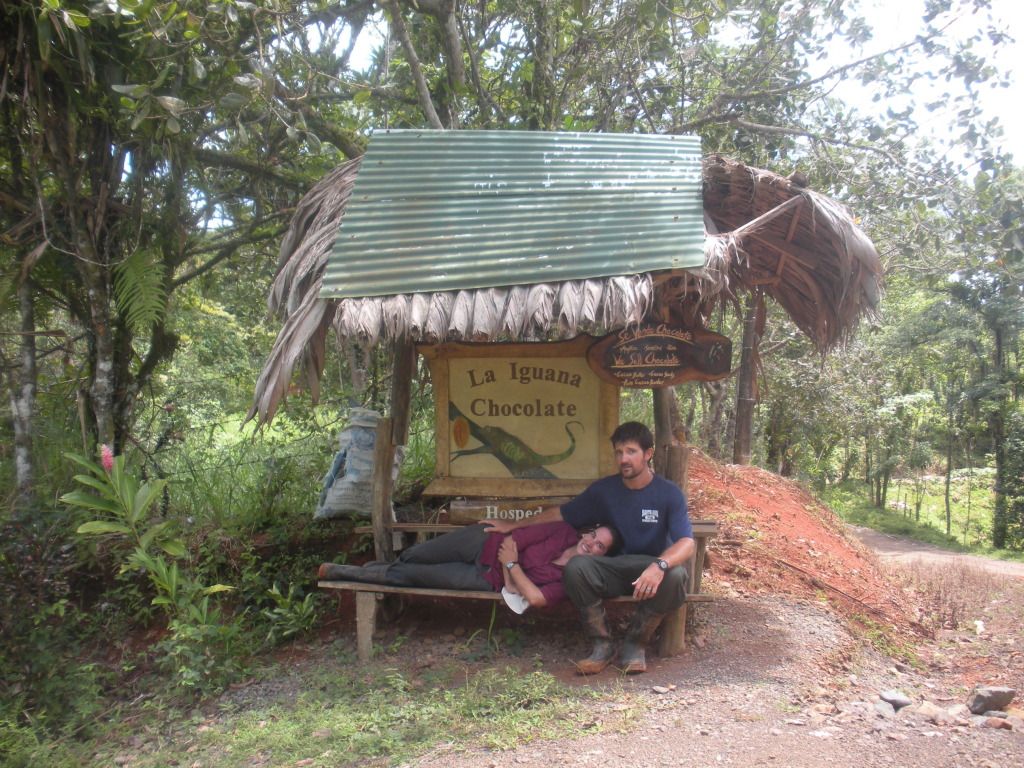
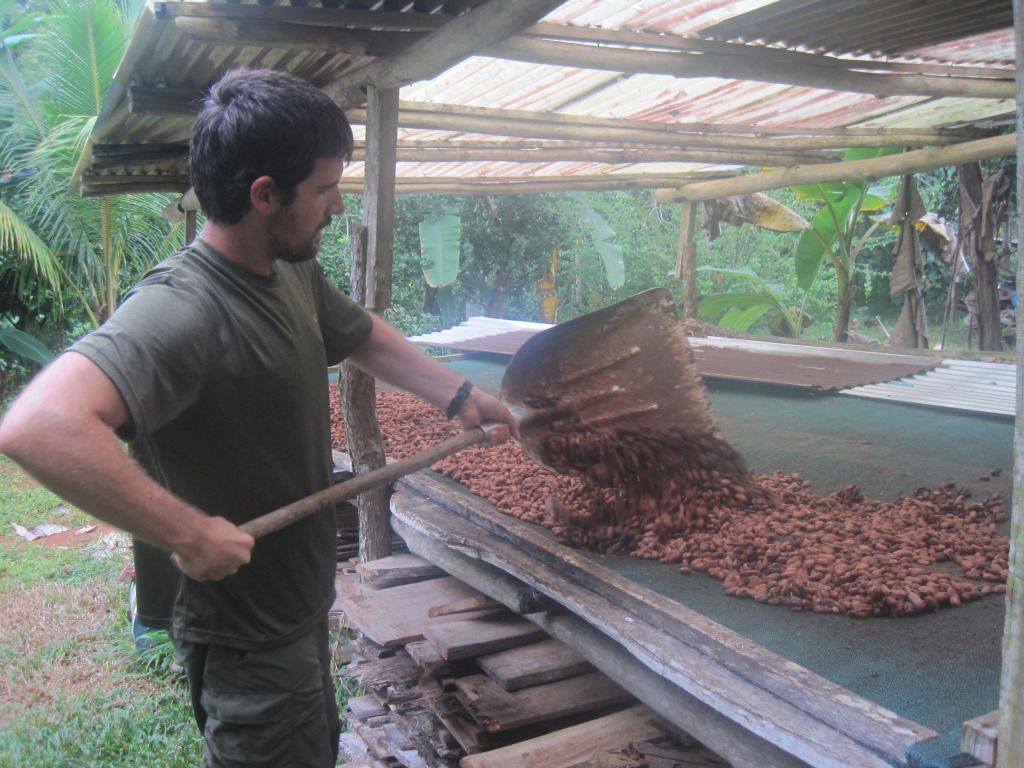
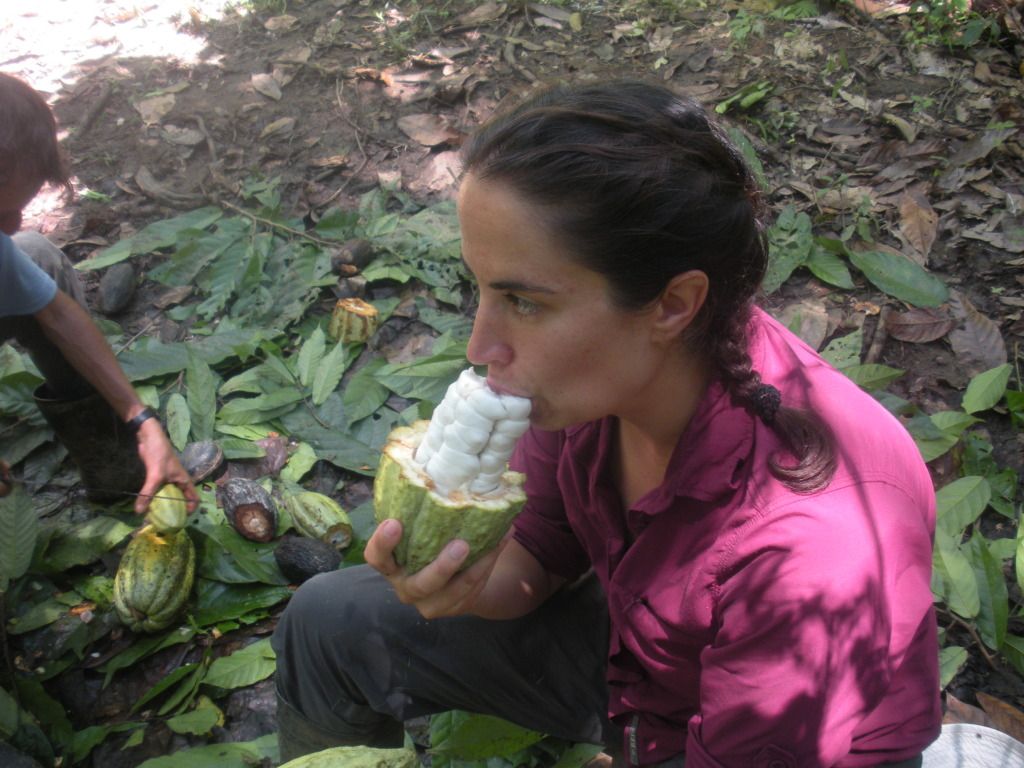
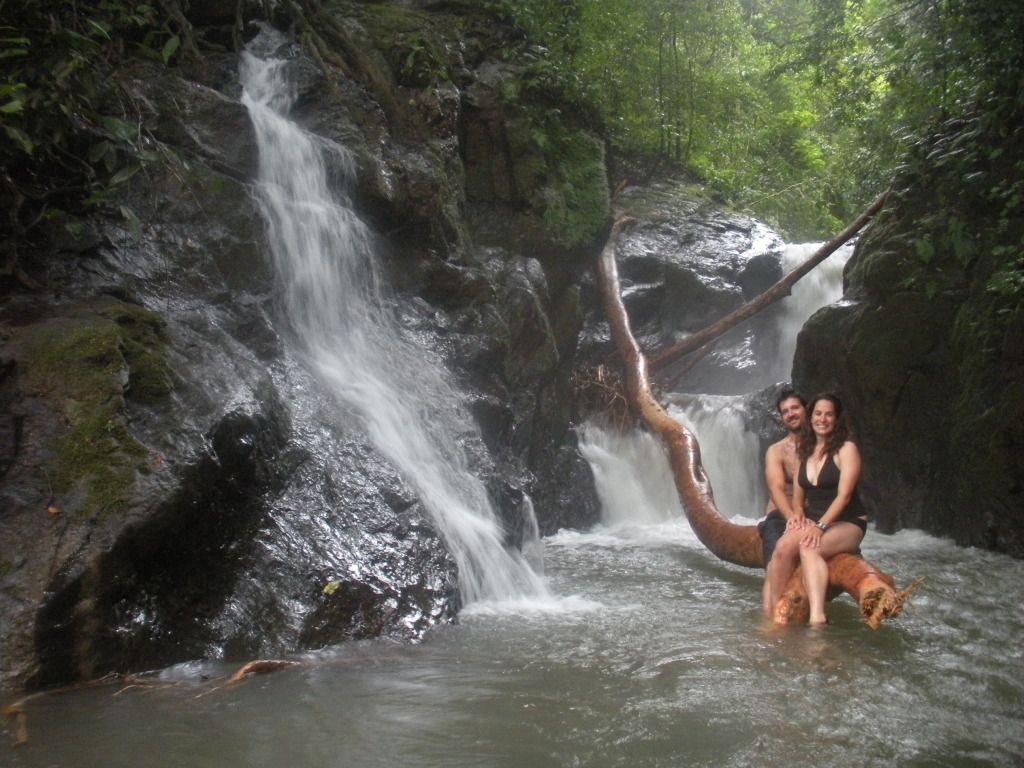
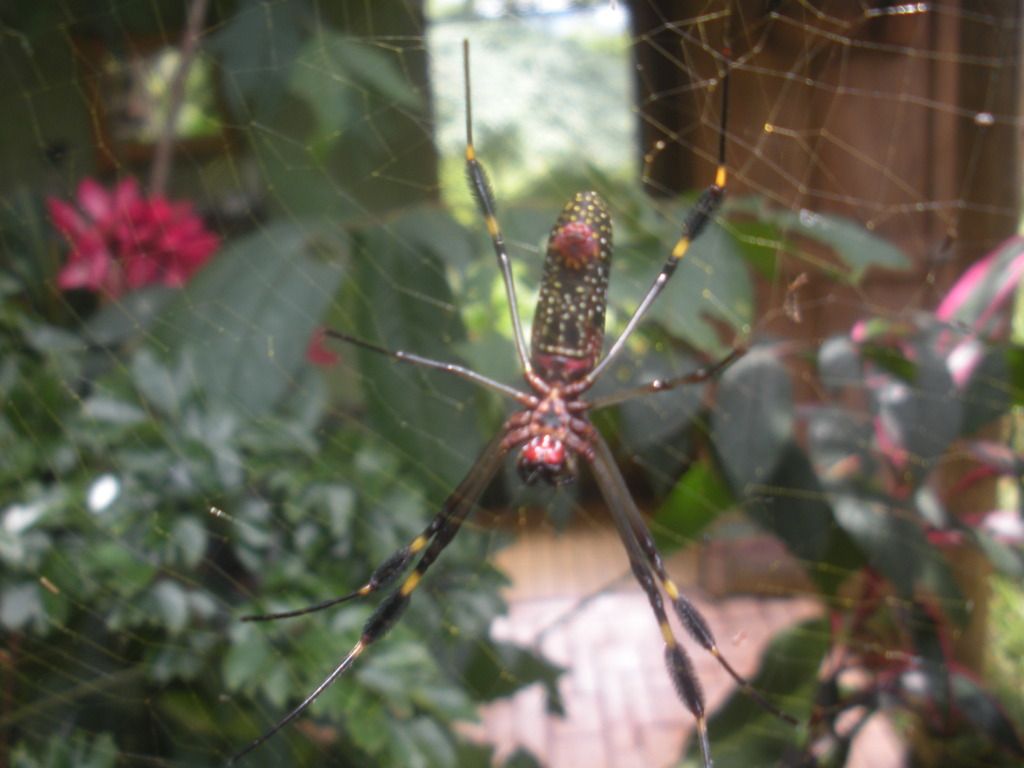
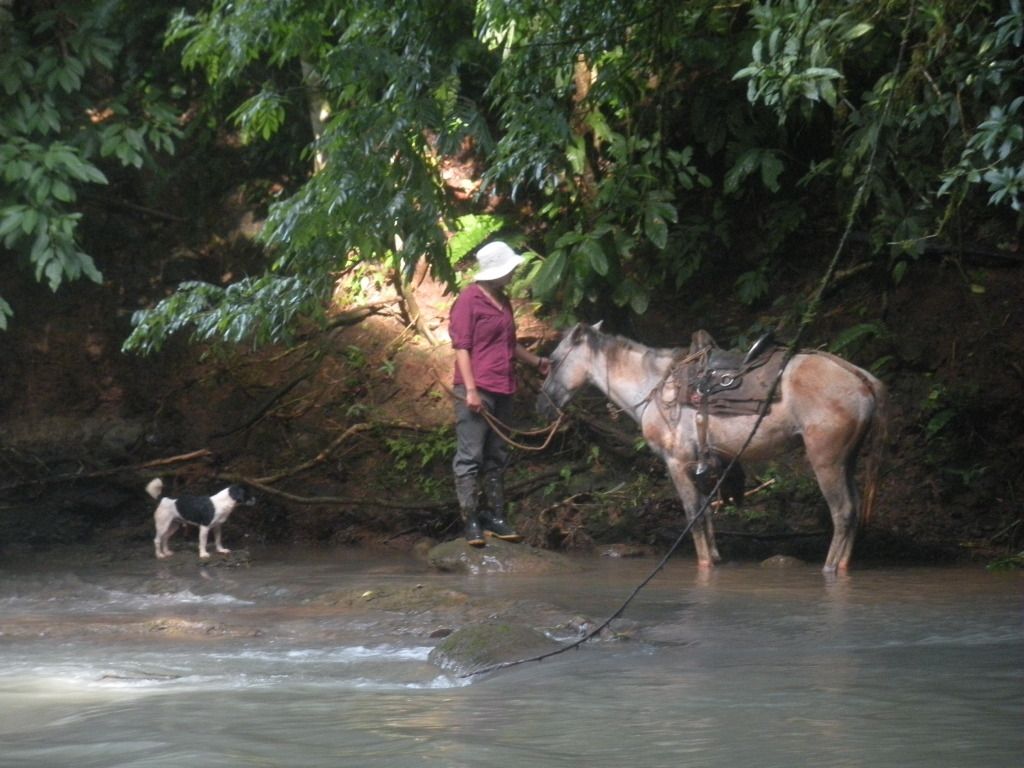
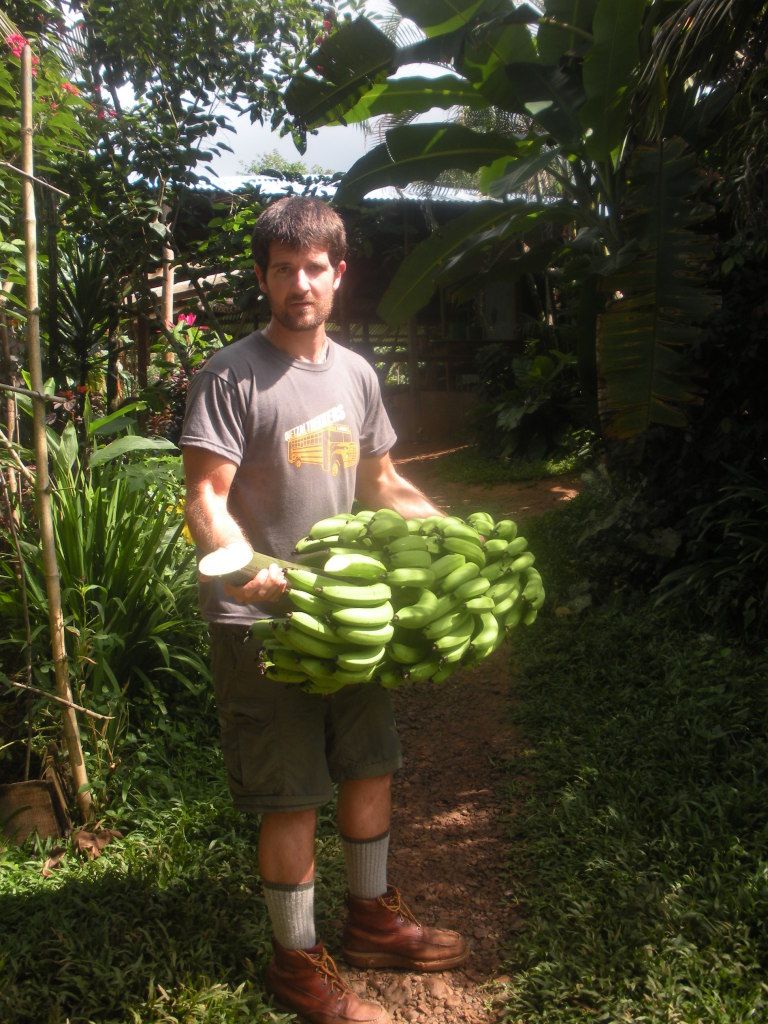
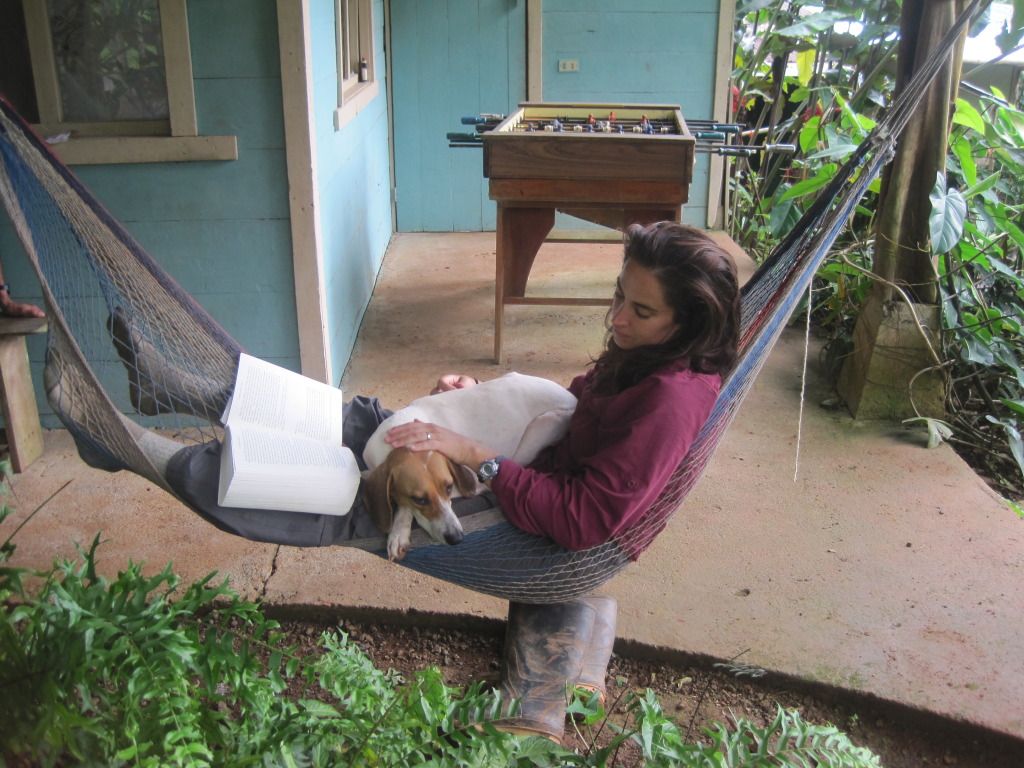
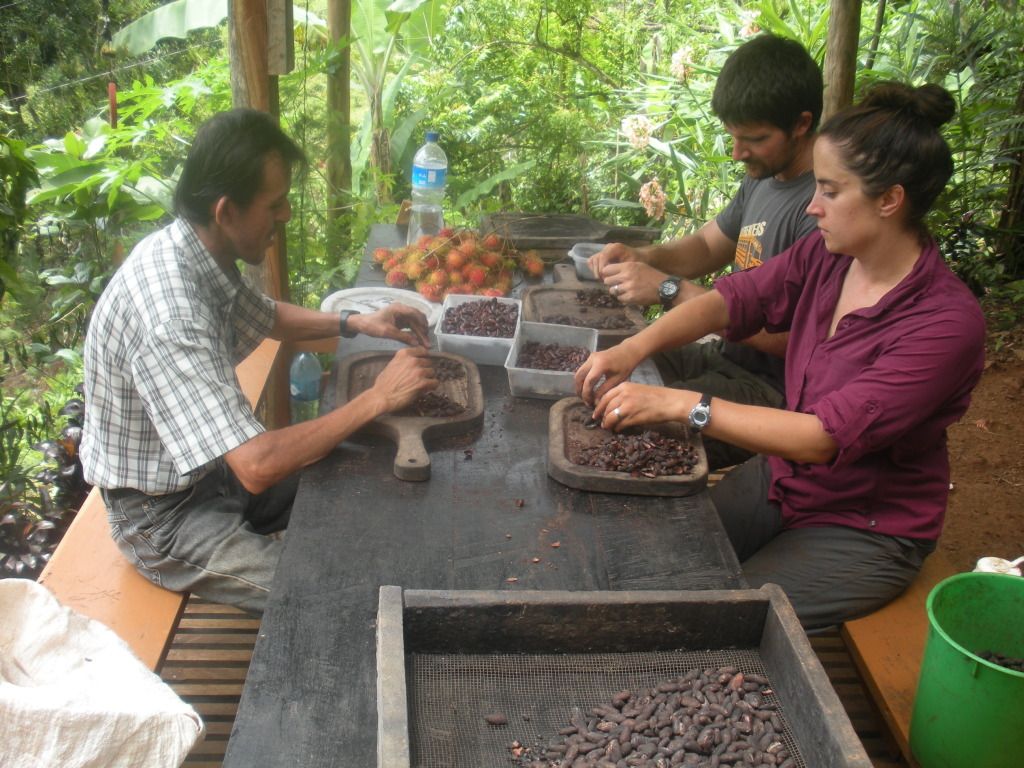
Comments
Post a Comment